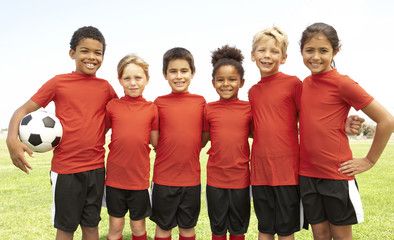What is Co-Educational Sport?

Most independent schools which are currently co-educational were originally boys-only. A small number of girls’ schools successfully took boys, but not in anywhere near the same volume that their counterparts did.
This has meant that most co-educational schools have assumed a boys’ sport model and attempted to apply that to girls, often with little adaption. This has been based on a heavy diet of team games, with supporting programme of school matches. From the outset, gender-specific games have operated in parallel. There has, however, been limited overlap. Historic girls games, such as Hockey, Netball and occasionally Lacrosse have operated their own programme of coaching and competition. It has been largely coached and managed by female staff, usually operating at arm’s length from the male sport. Boys and girls teams who play the same opponents often still don’t do so on the same day.
There has become a growing awareness that this cannot really be described as a co-educational programme. This is gender specific sport in a mixed environment. It raises the inevitable question, therefore, of what co-education means in school sport?
One interpretation is that both sexes should play the same games, and that a school which offers boys’ Rugby is obliged to make the same offer to girls. Whilst being a neat theory, this is rarely workable in practice. Nor is it necessary. Another possibility is that the same demands should be made of girls and boys: if one sex has regular weekend fixtures, then the other should match this. Other parallels demand parity of recognition: if one sex has a colours systems and special, symbolic clothing, then this should also be available to the other. Ties and striped blazers have therefore come to be made in female sizes.
None of these interpretations seems wildly satisfactory. None is irrelevant, but all are inadequate alone. So, what might co-educational sport and exercise look like if it was great?
The foundation would be the common aspiration that all pupils generated a positive relationship with physical activity that might last a lifetime. Similar expectations of involvement and gender blind opportunity might enhance that. Culturally significant games would be available to both sexes. Some of these will be sports that are traditionally single sex, though open to a minority of other pupils who particularly wish to take part.
There needs to be a management system for sport that is not sex based. The Head of Boys/Girls’ Games is probably a redundant post from a different era: a head of hockey, cricket, tennis, football or many other sports would run a programme that had teams of both sexes, and maybe - increasingly - mixed teams as well. Opportunities and expectations should be equal for the sexes, with a coaching workforce where sex is increasingly irrelevant. The leadership of co-educational sport does not need to categorise by sex – or allocate budgets and resources separately.
The new normal will become sexes playing and exercising together, in an environment where distinctions are made on grounds other than sex. There will still be single sex teams in many sports, reflecting a competition programme. However, there will be many sport and exercise opportunities available to all members of a school community. Achievement recognition criteria will equally applied.
It has been a long journey from boys’ schools with a few girls into full co-education. This is now the norm for the majority of schools. The last battle ground is sport: normalising an understanding of what this would look like in a gender-blind world is the final challenge.